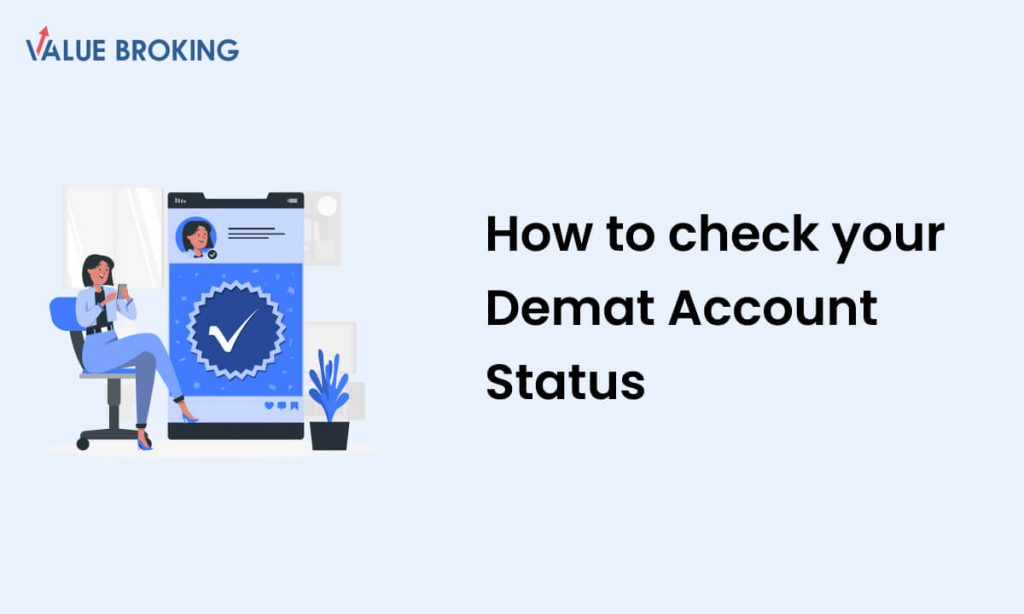How to check your Demat Account Status?

If you want to trade and invest in the stock market, you must open a Demat Account. It is necessary to hold and trade all the shares and securities such as bonds, ETFs, Mutual Funds, debts, and more dematerialized forms. A Demat account is also termed a Dematerialized account. Investors no longer need to worry about data theft, which facilitates easy trading without manual paperwork. Demat accounts resemble bank accounts in many ways. The only difference between the two is that Demat holds securities in digital form, whereas bank accounts have money.
Banks allow holders to check their bank statements whenever money is credited or debited online or offline (physical passbook); the Demat account provides the same service. Once you trade in the market, you must check your Demat account status. For example, you can confirm whether the transaction was successful or a failure.
Now you know about the Demat account statements, but how to check a Demat account status? First, let’s discuss it more.
Table of Contents
Depositories and Depository Participants in India
In India, any shares purchased by investors are safeguarded and stored in one of the two types of depositories in an electronic form. The two types of depositories are NSDL (National Securities Deposited Limited) and CDSL (Central Depository Services Limited). The Securities Exchange Board of India (SEBI) is India’s Stock Market regulatory body, and it regulates all transactions. The two depositories don’t receive all the shares directly that the investor trades. Instead, the shares are acquired through depository participants or stockbrokers registered with SEBI. These DPs play the role of agents for these depositories. One more thing to remember is that you also need a trading account and a Demat account with a DP to make any investments.
Consolidated Account Statement
A Consolidated Account Statement (CAS) is the most important document when an investor tries to read their Demat account statements. The consolidated account summary helps the investor read their Demat account statements of transactions at any date. In addition, these statements allow investors to read statements regardless of the broker.
Demat Account Statements are classified as Statement of Accounts and Statement of holdings.
A statement of accounts summarises all the transactions in your account. At the same time, a report of holdings summarises all the assets held in the Demat account for a particular date.
How to Access the Demat Account Statement?
Investors can check the status of Demat accounts through the CDSL website online. Anyone can easily access the statements online with the proper procedure to check Demat account status.
So, just follow the given steps to check Demat account status.
- First, visit the CDSL website at cdslindia.com and log in to your profile.
- Next, you can see the ‘quick links’ tab on the website’s homepage. Select this tab and under this, select the ‘login’ button to log in to your CAS.
- You will be asked to enter the permanent account number (or PAN). But, first, enter the PAN card Number.
- Next, proceed to fill out your Demat account number.
- Then you will be asked to enter other requested data, such as date of birth; after filling out the form, complete the captcha requirements.
- Then click on the ‘submit’ button.
- You will receive an OTP to your registered mobile number, which you can use to authenticate your identity and login into your account.
If all the details you entered are correct, you can view your CAS and check your Demat account status.
How to Read the Demat Account Statement?
Once you are given access to your CAS, you can check your Demat account statement. There are a few things to consider to read and understand the statement correctly.
Personal Details
Before looking at any data, one should first look at data to verify that they have access to the correct account and that all your credentials are the same as those listed on the document.
Folio Number
It is a number unique to each investor and serves as a source of identity for all future investments made by the investor. Therefore, it is essential to ensure that this number is correct.
Fund Options and Names
It shows users the details of their funds, like the fund’s name and mentions of dividend payments. Investors can also access the growth of the funds they invest in.
Dividend Payouts
It shows the history of all the dividend payments received by investors from their investments.
Net Asset Value
It is known as the NAV is the price per unit. It varies daily. Thus the NAV in the statement is from the time of investment.
Transaction Summary
It gives a compilation of each of the transactions you have made in the stock market plan is also mentioned.
Conclusion
With a Demat account, investors can keep track of their investment history and transactions. Each investor has a unique identity number to access the Demat account. Traders can check a Demat account status online from the depositories. The CAS gives a clear picture of all investments and is easy to interpret.
Frequently Asked Questions (FAQs)
The two types of depositories are NSDL (National Securities Deposited Limited) and CDSL (Central Depository Services Limited).
You can access your Demat account status online by logging into your account at the respective depository. In addition, you can log in to your trading platform, i.e., the app or website you trade and invest in.
CAS is a document that includes a history of your transactions and investments.